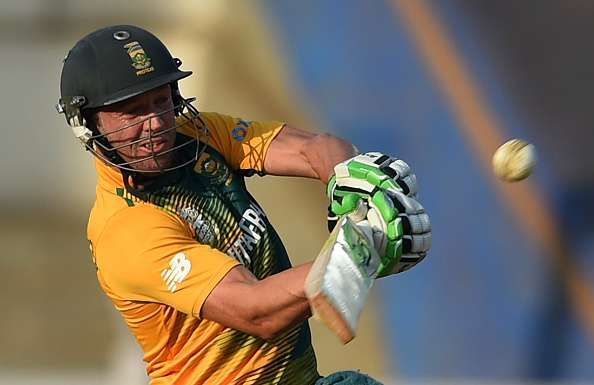
The enigma of AB de Villiers' poor T20I record
There is no denying the fact that AB de Villiers is one of the stalwarts of modern cricket. He possesses the ability to conjure innings of remarkable acceleration, yet has a copybook defense to build a wall if he wants to. Last year, he broke record after another in a golden run that saw him become the fastest centurion in ODIs, and the first to hit 50 sixes in a calendar year.
Yet, one look at his T20I statistics present a startling anomaly, and hardly reflect the talent the guy boasts in the shortest format. In 64 T20I innings, the South African averages a meagre 22.87, with only seven fifties. His career best, an unbeaten 79, was against Scotland way back in 2009. What is it that prevents one of the best batsmen of the generation from excelling in international T20s as well?
De Villiers has an enviable IPL record and has a number of breathtaking innings to his name in the domestic Indian league. He has been in remarkable form since 2012, with a strike rate of 165.48, a good twenty units above his career IPL strike rate of 144.87. Overall, de Villiers averages 36.71 from 93 IPL innings, with 34 30+ scores. He stands in the overall list of top ten run-getters with two centuries to his name.
The South African ODI captain, in fact, has passed the half-century mark only seven times in T20Is, but seems to have found form recently, especially after a trailblazing 29 ball 71 against England, reaching his 50 in 21 balls, the fastest by a South African.
A constant shuffle
De Villiers has batted in four positions in T20Is, from the opening slot to No.5. Yet, he hasn’t been able to find stability in any of the positions. His most successful position has been No.4. where he averages 27.80, with 584 runs and eight 30 plus scores. He has opened the batting nine times and has four 30 plus scores, including the 71 against England. His least successful position has been the No.5, where he averages just 14.71 and has a strike rate of 114.44.
One of the reasons why de Villiers has not been able to show the consistency that he has achieved in the IPL is the constant shuffling up and down the order that he has to go through in the Proteas line-up. For the Royal Challengers, he comes at No.5, when the strong top order has laid the platform for a late-innings blitz.
With a fragile top order, South Africa doesn’t provide the same luxury to him. For a more consistent and stable performance, he needs to come higher up the order, so that he gets more time in the middle to get his groove back. If the 29 ball 71 while opening is anything to go by, he has surely found his liking at the top of the order.
His IPL career can be split into two halves, with stellar performances from the 2012 season onwards. The highlight of his stint in the RCB jersey is a 59-ball 133 against the Mumbai Indians in last year’s tournament, where he showed his wide range of strokes and rapid acceleration in the latter part of the innings. Another memorable innings was an 11-ball 41 against the same opponents. His brilliant ball striking ability has rubbed off on his T20I career as well, as highlighted by his improved strike rate in the last couple of years.
Yet, the average still remains low, and although his performances are marginally better in the latter part of the innings in T20Is, he hasn’t been able to recreate his magic in the first fifteen overs.
Also, he tends to get out in the Powerplay quite often, once every 19 balls to be precise. This presents a cause of concern for the South Africans, who bank on de Villiers to provide stability in an unpredictable batting line-up. The World T20 brings de Villiers back to India, a place he has made his own owing to numerous blinders in the IPL. The Proteas will be hoping to see more of that in the coming weeks. So would we.
